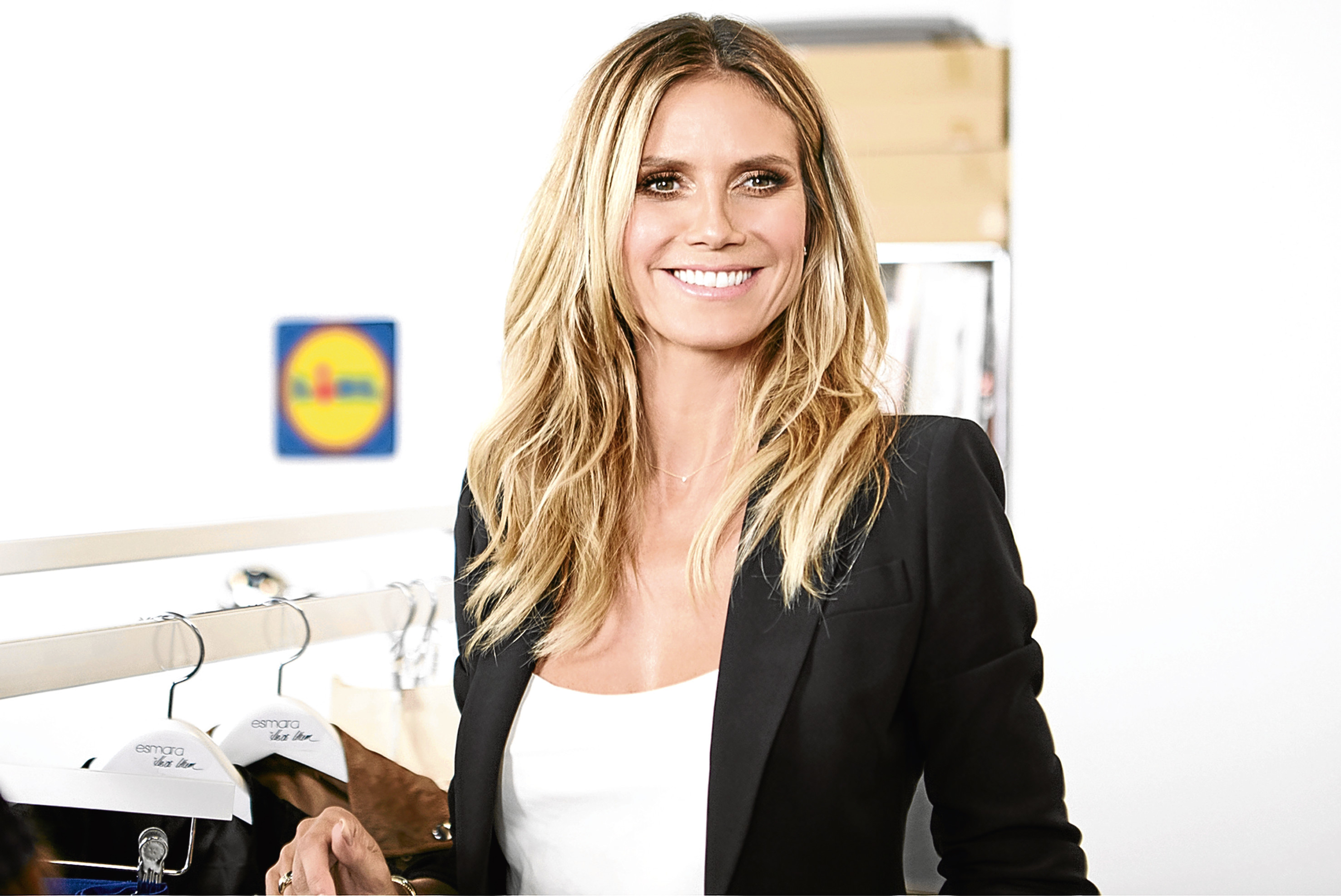
BUDGET supermarket Lidl stunned the fashion world this week when it announced it had signed supermodel Heidi Klum to design a range for it.
The range, which will go on sale later this year, is intended to make Lidl a “destination” for style-conscious shoppers.
That means Lidl is banking on the quirky German fashion star encouraging more people to drop any snobbery they might have towards buying from a budget supermarket.
It’s another sign that, for all of Britain’s supermarkets, fashion is becoming ever-more important.
“It’s fantastic Lidl has signed Heidi Klum,” says Dr McColl, a Senior Lecturer in Marketing and Fashion Marketing at Glasgow Caledonian University.
“But it still has a long way to go before it catches up with the main players.”
The daddy of supermarket style is George at Asda.
“George has around 11% of all womenswear sales,” says Julie.
Impressive figures, and just slightly behind Primark, which leads the way in budget fashion.
The success of the George brand is all the more striking when you consider the reaction when Asda launched it.
Selling clothes with coffee and cheese was unheard of. Pundits had their doubts.
They were forced to eat their words.
“We believe George generated clothing, footwear and accessories sales of around £2.1 billion last year,” says John Mercer, Lead UK Analyst at Fung Global Retail & Technology.
According to John, Tesco’s F&F brand trails in second place, with sales of £1 billion, while Sainsbury’s Tu is in third place with £800 million.
Morrisons, with the Nutmeg label, has a long way to go. It has been selling children’s clothing for around five years, but it only launched womenswear in March.
According to Dr McColl, less than 1% of its total sales are clothes.
And though Asda’s figures of more than £2 billion are impressive, they account for only 2.5% of its total sales. The supermarkets are making a concerted effort to get us to buy online, too.
One of retail analyst Mintel’s recent reports states almost half of women – 44% – have bought online or instore from a supermarket.
And among the 45-54 age group it rises to 54%. Dr McColl believes younger women could further increase sales.
“They’re less brand conscious than they once were and appreciate value,” she says. “As for many of us, browsing clothes could help to ease the tedium of shopping for them.”
George has long sold the most in terms of supermarket fashion but Sainsbury’s in particular is trying to catch up.
“Sainsbury’s Tu sales grew by 10% in the run up to last Christmas and by 8.5% in a year,” says John Mercer.
“And it’s launched a number of initiatives, including the upmarket Tu Premium range. It also signed retail expert Mary Portas to help make Tu a destination brand for high street fashion.”
Heidi Klum may be a headline-grabbing signing for Lidl. But it needs to up its game in terms of shopping experience.
“Lidl still simply needs to improve its stores,” says Dr McColl.

Enjoy the convenience of having The Sunday Post delivered as a digital ePaper straight to your smartphone, tablet or computer.
Subscribe for only £5.49 a month and enjoy all the benefits of the printed paper as a digital replica.
Subscribe